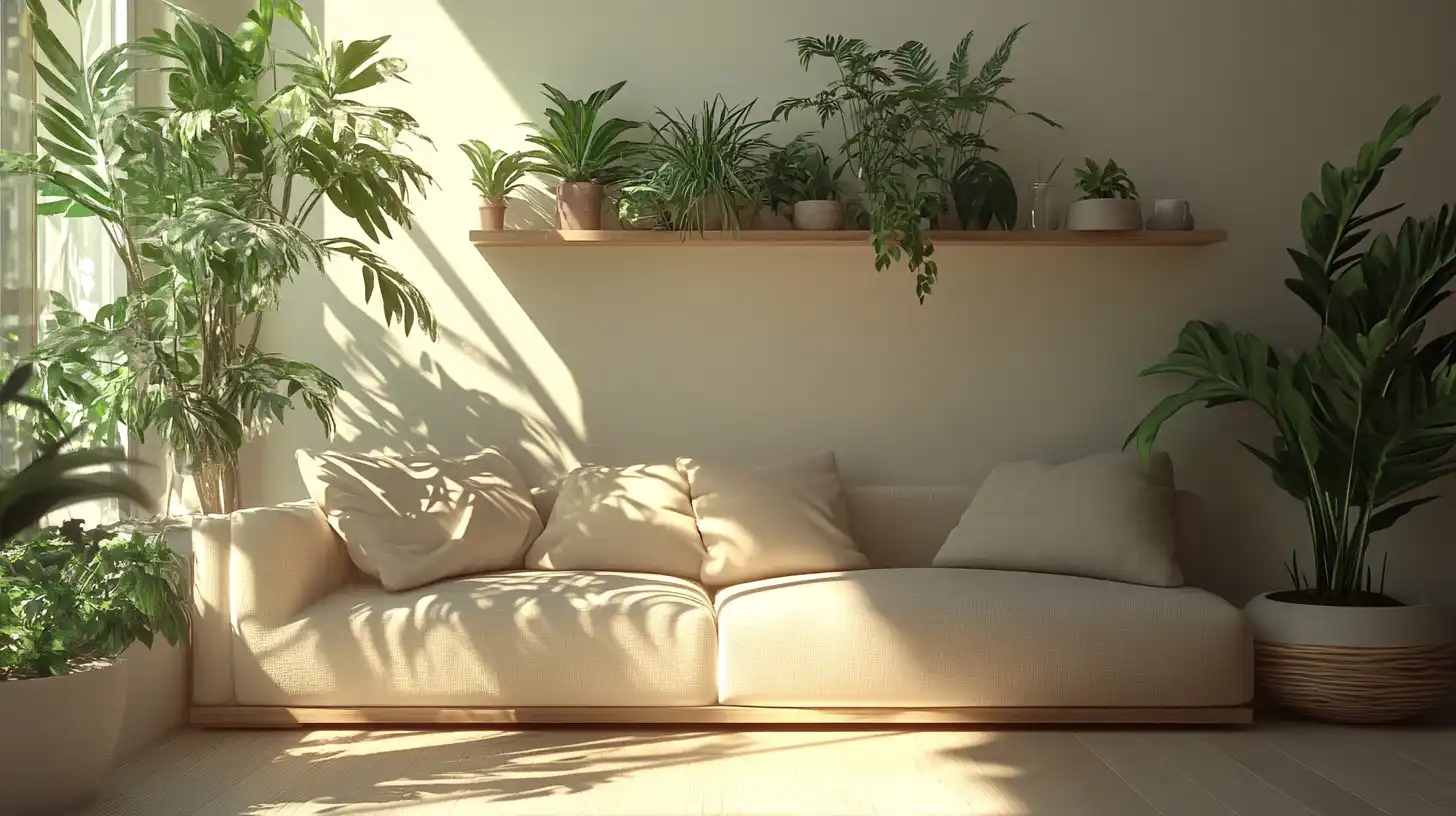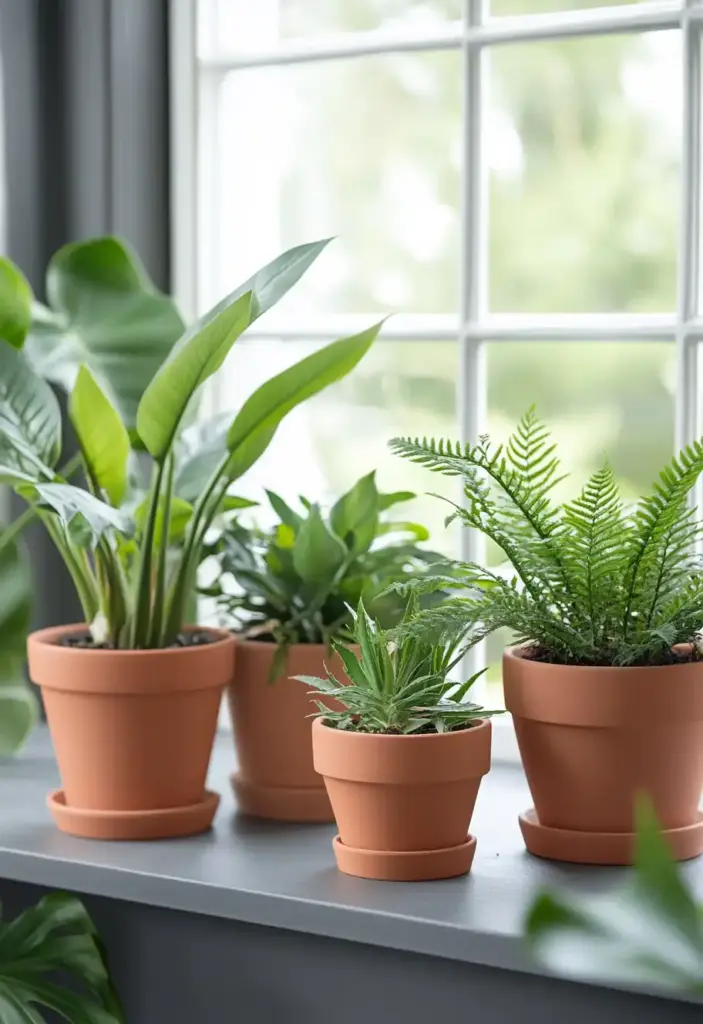Indoor plant styling has become more than just a design trend—it’s a powerful way to bring warmth, color, and a sense of tranquility into your home. Whether you’re refreshing a single room or curating a lush indoor garden, the right approach can completely transform your space. From thoughtful plant selection like snake plants or pothos to creative planter ideas that brighten your decor, small changes can make a big visual impact. In this guide, you’ll discover ten expert-backed styling tips that will help you turn any corner of your home into a green, serene sanctuary. Let’s dig into the details!
🌿 Love gardening inspiration? Follow me on Pinterest for bold plant ideas, tips, and seasonal color!
Table of Contents
🌱 1. Choose Wisely: Picking the Right Plants
The foundation of indoor plant styling starts with selecting plants that naturally thrive in your home environment. It’s tempting to pick a plant based on looks alone, but lighting, humidity, and your own lifestyle should guide your decision.
- Match light levels: For rooms with limited sunlight, go for low-light champs like the snake plant or ZZ plant. Bright, sun-drenched spots are perfect for showy foliage like the monstera deliciosa or fiddle leaf fig.
- Check humidity needs: Bathrooms may be ideal for moisture-loving plants like ferns, while succulents prefer drier spaces like offices or living rooms.
- Mind the scale: A giant palm in a tiny studio? Probably not ideal. Choose plants that complement—not crowd—your space.
Choosing the right greenery helps create harmony between plant and place. When each plant fits its environment, both the plant and the room flourish.
🪴 2. Elevate with Stylish Planters
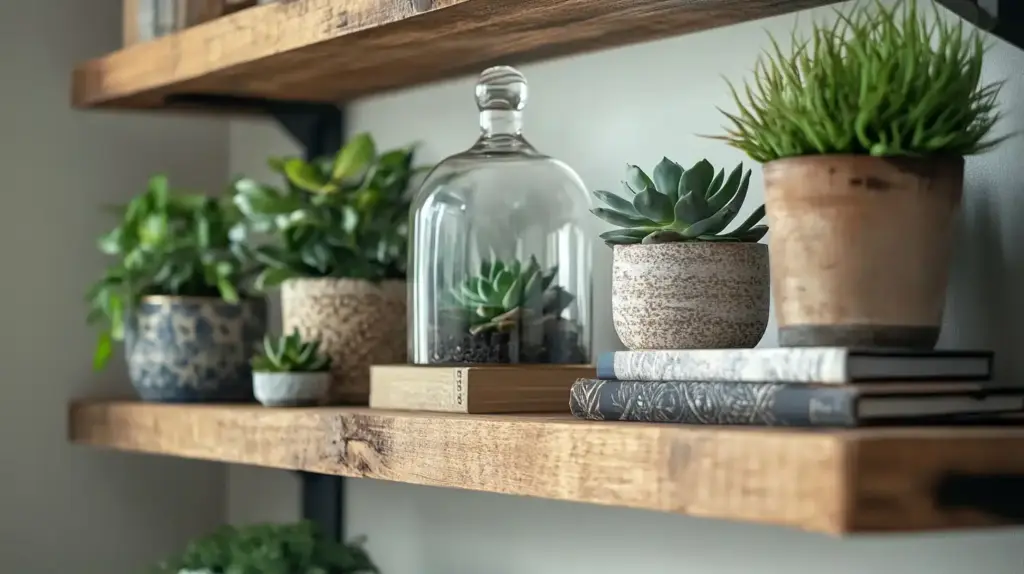
In indoor plant styling, the planter is just as important as the plant. Think of it as the frame to a beautiful painting—it can either enhance or distract from the overall picture. Stylish planters do more than hold soil; they serve as key design elements in your room.
- Choose the right materials: Whether you prefer the earthy texture of terracotta, the clean lines of ceramic, or the industrial feel of metal, select planters that match your decor style.
- Play with shape and scale: Mix rounded pots with angular ones, or combine tall and shallow containers to create visual variety.
- Use planters as accents: A bold-colored pot can inject personality, while a neutral one blends seamlessly into minimalist decor.
A thoughtfully chosen planter doesn’t just support your plant—it elevates the entire aesthetic of the space, making your greenery look curated and intentional.
🪜 3. Create Layers with Plant Heights

One of the most visually effective tricks in indoor plant styling is layering plants by height. This technique creates depth, draws the eye around the room, and makes your space feel more vibrant and curated.
- Use vertical levels: Combine floor plants, tabletop varieties, and hanging planters to guide the viewer’s eye from low to high.
- Mix plant heights: Pair a tall rubber plant or dracaena with mid-size peace lilies and compact succulents for a natural, tiered effect.
- Incorporate furniture: Bookshelves, plant stands, and wall-mounted shelves provide platforms to elevate smaller plants while saving space.
Layering prevents your greenery from feeling flat or cluttered. Instead, it gives each plant its own visual “stage,” contributing to a rich and dimensional indoor jungle vibe.
🎨 4. Combine Different Textures and Colors
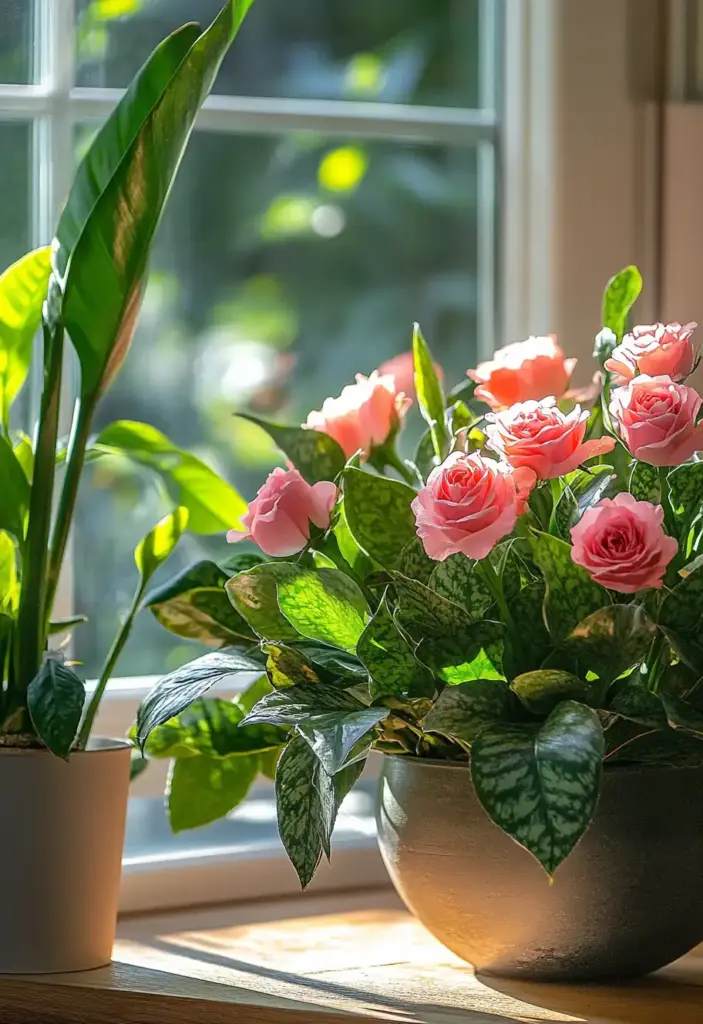
Diversity is key in indoor plant styling—and that goes beyond just plant size. Mixing textures and colors adds visual interest and brings life and personality to any room.
- Blend foliage types: Pair broad-leafed plants like calatheas with the fine fronds of a maidenhair fern, or contrast the spikiness of a snake plant with the smooth leaves of a pothos.
- Add flowering plants: Orchids or anthuriums introduce both texture and vibrant pops of color.
- Complement your decor: Use rich green plants against neutral or white walls for a clean, organic look, or pick muted-leaf plants to balance out colorful decor.
Think of your plant collection like a well-dressed outfit—contrast and coordination are what make it stand out. With the right texture and color combinations, your space will feel both intentional and lush.
🌿 5. Use Plant Groupings for Impact
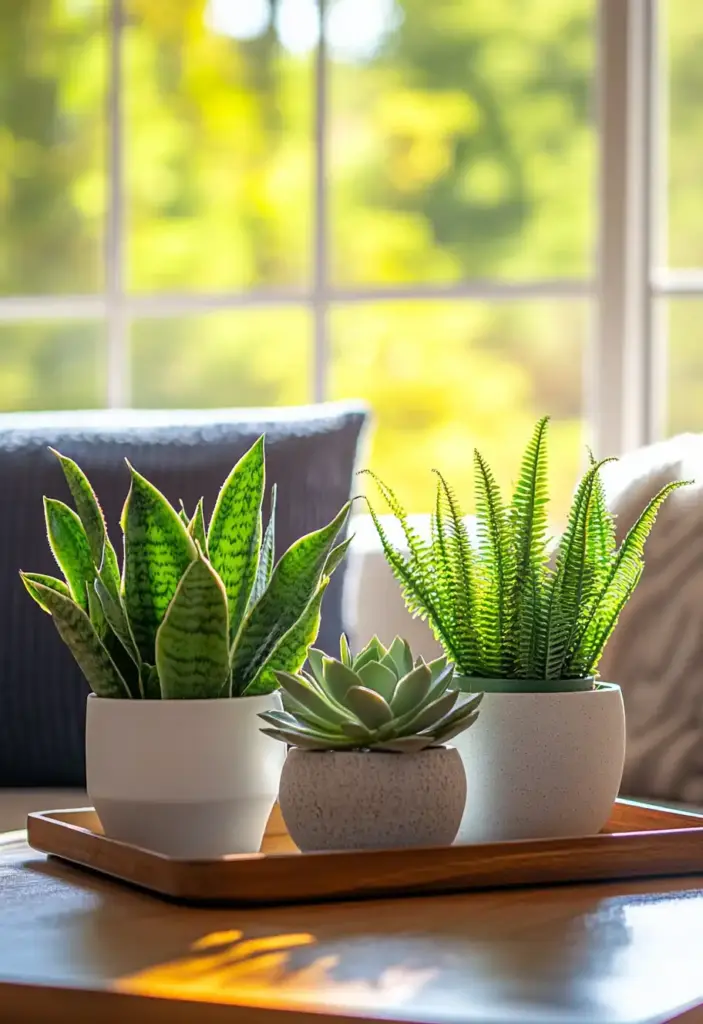
Strategic groupings are a hallmark of thoughtful indoor plant styling. Rather than scattering individual pots around your space, grouping plants creates focal points and a sense of cohesion.
- Follow the “rule of odds”: Arrange plants in clusters of three or five for a more natural, balanced look.
- Vary plant types and sizes: Combine a tall parlor palm, a mid-height philodendron, and a small aloe vera to create visual depth within the group.
- Unify with trays or stands: Place your grouped plants on a decorative tray or multi-tiered stand to anchor the display and keep things tidy.
Plant clusters are not only visually striking—they also allow you to play with color, form, and height in a single display, making any corner of your home feel like a mini indoor garden.
🪶 6. Hanging Plants for Vertical Interest

When surface space is limited, take your indoor plant styling to new heights—literally. Hanging plants are an excellent way to draw the eye upward, create vertical movement, and make use of overlooked spaces like corners or above furniture.
- Choose trailing varieties: Plants like pothos, string of pearls, or string of hearts create beautiful cascades of foliage.
- Utilize creative mounts: Try ceiling hooks, macramé hangers, or wall-mounted brackets for an airy, floating effect.
- Add to tight spots: Hanging plants are perfect for small apartments, bathrooms, or compact nooks where floor space is at a premium.
The result? A lush, layered atmosphere that feels more like a living canopy than a room. Hanging plants soften hard lines, add natural movement, and make your home feel more alive.
🌳 7. Incorporate Natural Elements
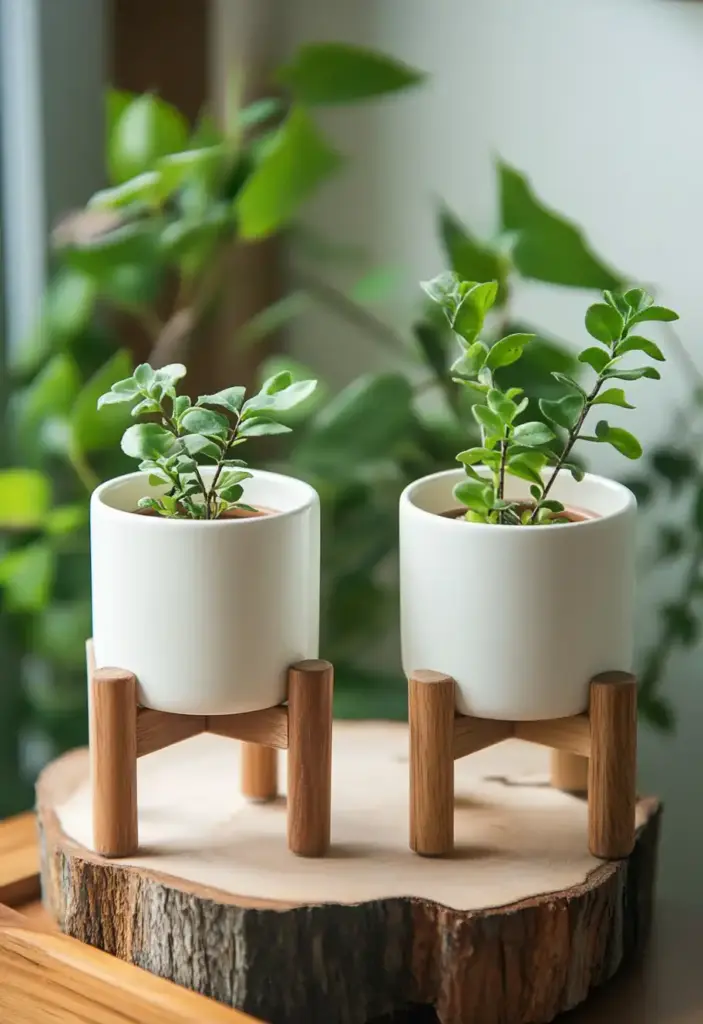
Great indoor plant styling goes beyond the plants themselves—it’s also about the materials and accents that surround them. Incorporating natural elements like wood, stone, and metal adds warmth and texture, helping to create a cohesive, grounded atmosphere.
- Use organic textures: Think wooden plant stands, bamboo shelves, or woven baskets that bring an earthy, rustic charm.
- Add stone or metal accents: Natural stone trays, concrete planters, or matte black iron pots offer contrast and a touch of modernity.
- Echo nature throughout: Even a reclaimed wood coffee table or a stone sculpture can tie into your plant styling by reinforcing the indoor-outdoor connection.
These subtle additions enhance the overall mood, making your indoor garden feel intentional and serene—like nature is just a step away.
🎨 8. Use Color Theory to Your Advantage
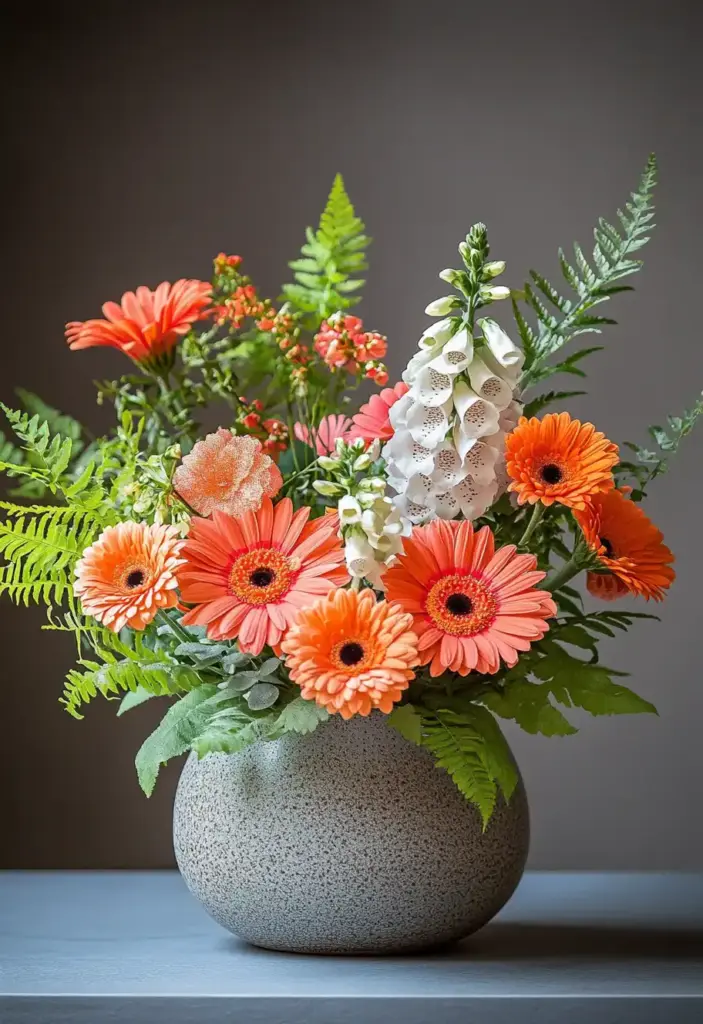
Color can dramatically influence the mood of a space, and in indoor plant styling, using color theory intentionally takes your decor from casual to curated. It’s not just about green—foliage and pots come in a wide spectrum of hues that can be harmonized with your interior palette.
- Monochromatic green for calm: Layering different shades of green (think ferns, rubber plants, and philodendrons) creates a soothing, spa-like feel.
- Introduce bold contrasts: Pair deep green foliage with colorful planters—terracotta for warmth, white for brightness, or black for modern edge.
- Use flowering or variegated plants: Try caladium, croton, or anthuriums to add bursts of red, pink, or yellow that energize a space.
- Complement room colors: Match your plants and pots to your furniture or wall tones for a cohesive look, or intentionally contrast for visual drama.
When done well, color adds personality and polish. It tells a story through plants—not just of life, but of style and intention.
🌴 9. Create a Focal Point with Large Plants
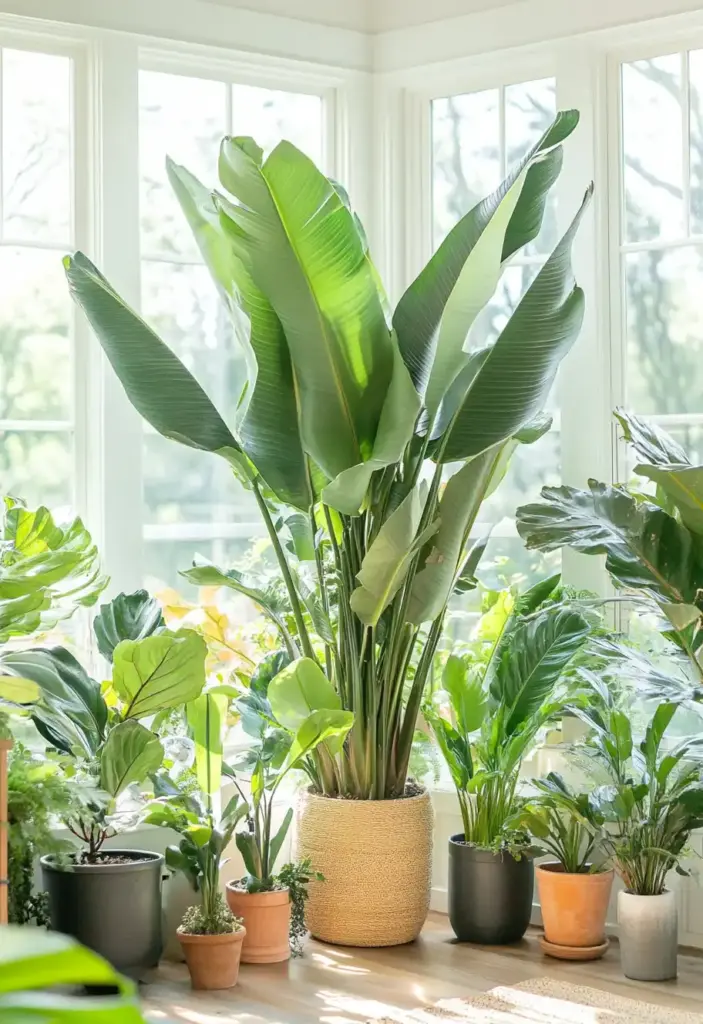
In indoor plant styling, every room benefits from a strong visual anchor—and a statement plant is one of the most effective ways to achieve that. Large, sculptural plants not only draw attention but also add structure, movement, and a sense of grandeur.
- Choose bold varieties: A fiddle leaf fig, bird of paradise, or indoor palm instantly commands attention with its height and dramatic leaves.
- Place strategically: Situate your statement plant in a high-visibility area—by a window, at the end of a hallway, or in an empty corner—to naturally pull the eye across the room.
- Frame with smaller plants: Surround your focal plant with shorter companions to create a balanced, layered look that enhances rather than competes.
Think of these large plants as living sculptures—they bring elegance, height, and harmony while setting the tone for the entire room.
🖼 10. Accessorize with Garden-Inspired Decor
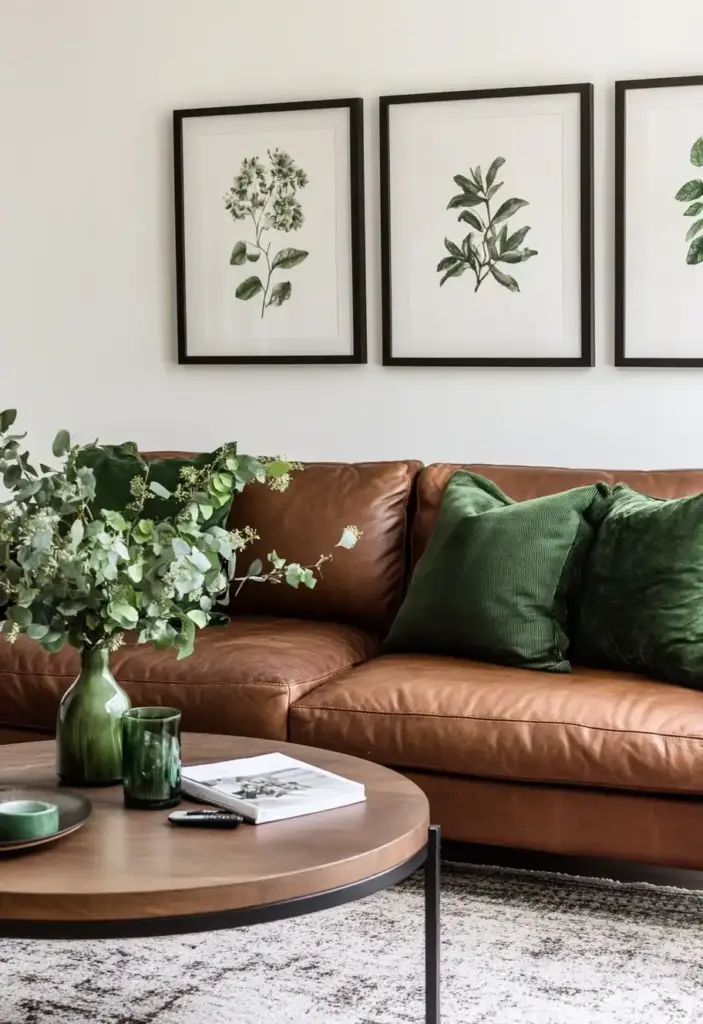
To complete your indoor plant styling, bring in decor elements that echo the beauty of your greenery without stealing the spotlight. Accessories can help reinforce your theme, create cohesion, and add a personal touch that turns a house into a home.
- Incorporate botanical art: Framed prints of leaves, flowers, or vintage plant diagrams complement your indoor garden beautifully.
- Add terrariums or glass cloches: These mini plant displays serve as eye-catching accents that highlight your attention to detail.
- Layer in subtle décor: Think throw pillows with leaf motifs, rattan baskets, or ceramic figurines with a nature-inspired vibe.
The key is balance. Your accessories should enhance the space without overwhelming it. When done right, these final touches unify your entire plant styling concept, making it feel intentional, stylish, and uniquely yours.
✅ Conclusion
Mastering indoor plant styling is all about creating a space that feels alive, personal, and in harmony with your home’s design. With the right mix of plant types—like low-maintenance houseplants such as snake plants or pothos—plus decorative containers, textures, and thoughtful placement, you can turn even the smallest space into a thriving indoor oasis. Whether you’re a minimalist or a maximalist, a first-time plant parent or a seasoned green thumb, these 10 styling tips offer timeless inspiration to help you design a home that truly grows with you—or even take it outside to your front porch for a cohesive transition.
🙋♀️ Frequently Asked Questions About Indoor Plant Styling
1. What is indoor plant styling?
Indoor plant styling is the practice of arranging and decorating indoor spaces using houseplants in a visually pleasing and functional way. It combines elements of interior design—like color, texture, and space planning—with the care and placement of plants to enhance a room’s atmosphere.
2. How do I choose the right indoor plant for my home?
Start by assessing your space’s lighting and humidity levels. For low-light areas, consider snake plants or pothos. For bright, sunny spots, monstera, rubber plants, or fiddle leaf figs thrive. Also, factor in the plant’s mature size and your ability to maintain it.
3. How can I style small spaces with plants?
Use hanging planters, wall shelves, or vertical plant stands to maximize space. Small plants like succulents, air plants, or trailing vines work well in compact areas like shelves, desks, or bathroom counters.
4. How many plants should I group together?
Grouping plants in odd numbers—typically 3 or 5—creates a more organic and balanced look. Vary the sizes and textures for added depth, and place them on trays or stands to keep the arrangement cohesive.
5. What are the best planters for indoor plant styling?
Choose planters that match your decor style. Terracotta adds warmth, ceramic offers a polished look, and metal or concrete brings in modern or industrial vibes. The planter should also have proper drainage to support plant health.
6. How do I use color theory in indoor plant styling?
Stick with green-on-green for a calming effect, or add colorful foliage or flowering plants for vibrancy. Match or contrast planters with your existing color palette to create harmony or focal points.
7. Are there any low-maintenance plants that still look stylish?
Absolutely! Consider ZZ plants, snake plants, peace lilies, or rubber plants. These varieties are both visually appealing and easy to care for, making them ideal for beginners or busy plant lovers.
8. Can I use artificial plants in indoor plant styling?
While real plants offer health benefits like air purification, high-quality faux plants can be used where maintenance is difficult. For best results, mix real and artificial plants subtly to maintain a natural feel.

